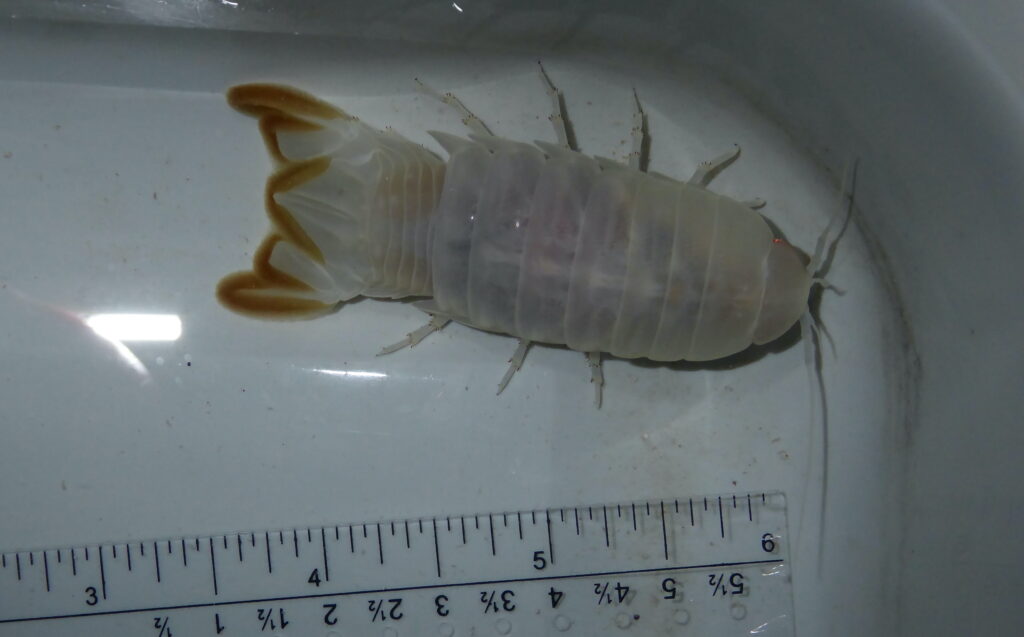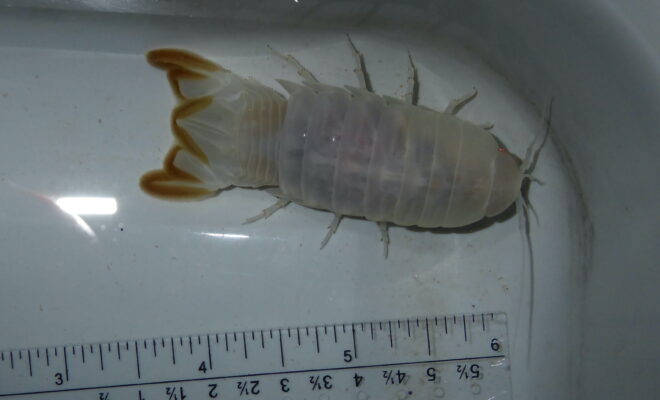
There’s been an exciting new discovery in the Exuma Sound. An international group of researchers, including scientists at the Cape Eleuthera Institute, recently published the scientific description of a new species of deep-sea isopod called Booralana nickorum.
Our team first trapped a specimen of the isopod in 2014 and returned years later to further investigate. In 2019, a scientific mission was conducted in the Exuma Sound with researchers from CEI, Stony Brook University, and OceanX to document deep-sea biodiversity. Several more specimens were collected using light-traps, and the formal identification and description process began.
Isopods live in marine habitats around the world and many are only a few centimeters long. Prior to this exciting discovery, scientists believed that there was only a single species of Booralana that existed in the Northwest Atlantic Ocean, Booralana tricarinata. However, with the discovery of this newly identified species, there officially two in the genus from The Bahamas.
We found this isopod at around 550 meters (1,800 ft) deep, and it is only about the length of your pinky finger.
Although this species is small, it plays an important role in its environment. Isopods speed up the decomposition of plant and animal matter, which benefits the entire ecosystem. These scavengers make the nutrients in this falling organic debris available in the deep-sea food web to ensure the productivity of these ecosystems.
